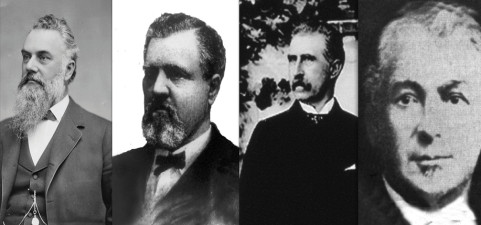
Miner
Bonanza Kings - Mackay, Fair, Flood, O'Brien
John Mackay, James Fair, James Flood, William O'Brien
In 1871, Irish-Americans John William Mackay, James Graham Fair, James Clair Flood and William S. O'Brien, organized the Consolidated Virginia Silver Mine near Virginia City, Nevada, from a number of smaller claims on the Comstock Lode and later added the nearby California mine. Mackay and Fair had the mining knowledge and Flood and O'Brien raised the money. The purchase price of the claims, later to become fabulously a source of wealth, was about $100,000. The original stock issue was 10,700 shares, selling for between $4 and $5 a share.
In 1873 the "big bonanza" was uncovered and San Francisco and the entire mining world were hurtled into a fever of excitement. The first stock issue was converted into two issues of 108,000 shares each, and by the middle of 1875 the speculative value of the two mines were close to $1,000,000,000. Shares went as high as $710.
For three years after the discovery of "big bonanza" the two mines produced $3,000,000 per month. In 1876, for exhibition purposes, $6,000,000 was taken in one month from both mines. Production began to fall off in 1879 but in twenty-two years of operation the two mines yielded more than $150,000,000 in silver and gold, and paid $78,148,800 in dividends, making the four owners into some of America's wealthiest men. The four-way partnership, although formally called "Flood and O'Brien," was more commonly known as the Bonanza firm. Together they also established the Bank of Nevada in San Francisco, California.
Last Updated on: 2024-02-28
